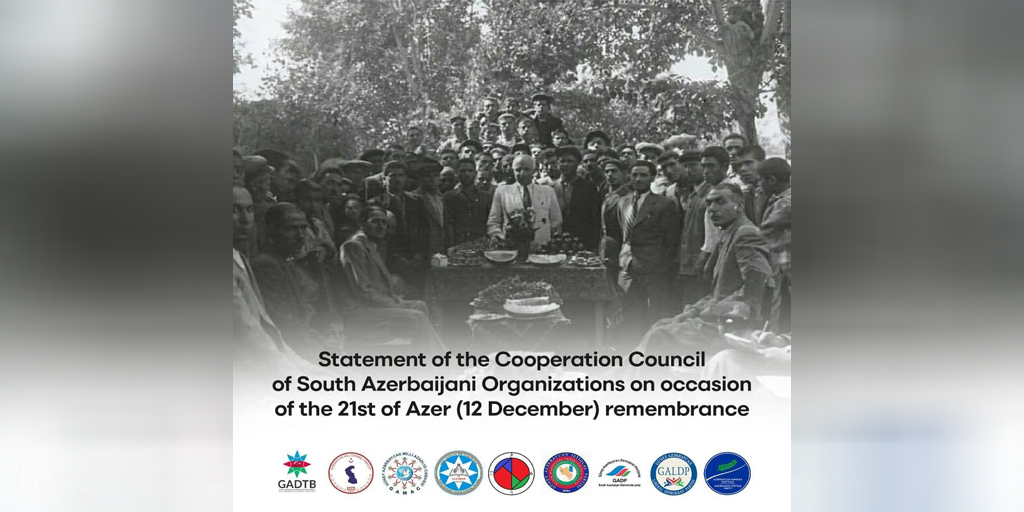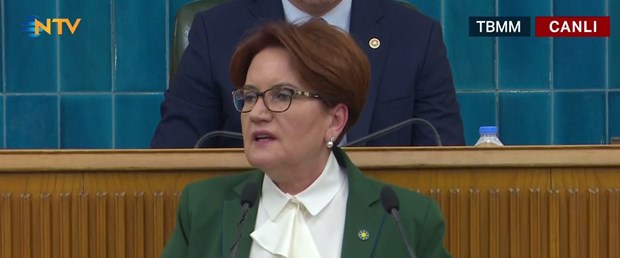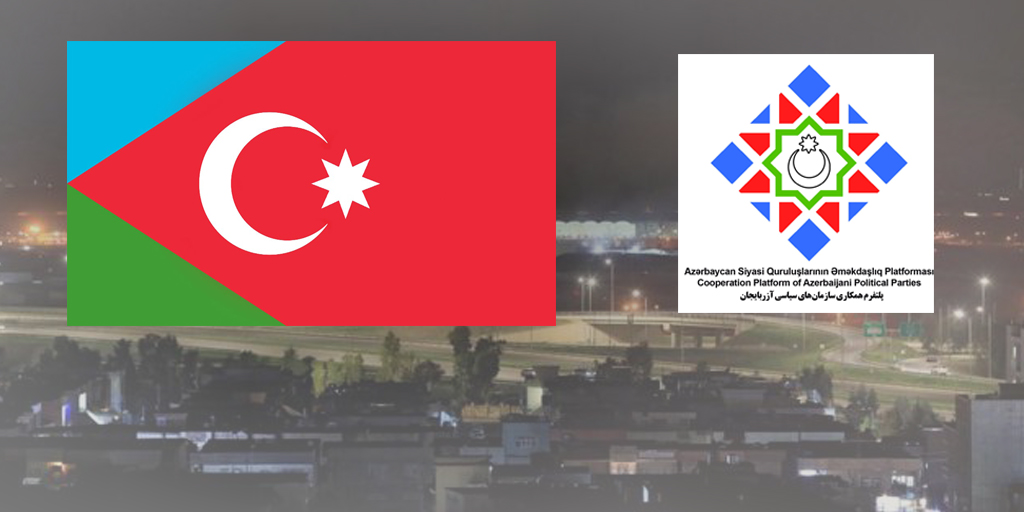WHY “SOUTH AZERBAIJAN” MATTERS (BY-Saleh Kamrani)

This article is a general review of the recent developments concerning the legitimacy
of the Iranian government, nuclear proliferation in the international context
and human rights violations. Politics, economics, geography and demography of
Azerbaijan and particularly the region commonly referred to as ‘South Azerbaijan’
within the Islamic Republic of Iran, are analyzed through a historical perspective.
The role of South Azerbaijan in promoting human rights, democracy, and peace and
in mitigating regional and international tensions are studied.
Iran is a country of special geostrategic significance due to its central location
in Eurasia, the cradle of tension and crises. Iran has large deposits of
natural resources, access to the Caspian Sea in the north and the Persian
Gulf in the south, a considerable population, a consumption economy, and
is ruled by theocracy; for these reasons and more, Iran is defined as a center of
domestic and international conflicts and tensions.
The new Iran formed through a set of events such as Reza Khan’s coup at the
beginning of the 20th century, the abolition of Ahmad Shah Qajar’s constitutional
monarchy, annulment of the reforms of the constitutional revolution of
memalik-i mahruse (semi-federalism), establishment of non-pluralism, dynasty,
radicalism and chauvinism. Upon coming to power of the current theocratic government,
for the first 15 years a legitimacy constructed on religion continued.
In these years, ongoing wars and other problems were experienced. The first
rupture occurred during the cease-fire between Iraq and Iran and led to a reconstruction
policy. After the collapse of communism, which signified an end to the
polarized world, accelerated globalization, as well as the spread of universal values
and increased interaction between Iranians and the international community,
the power and legitimacy of the state was put into question. Further conflicts
became visible as reformists became powerful albeit defeated in the elections.
The struggle at the time of the presidential elections was apparent not only to
Iranians but to the whole world. In this regard, the presidential election of July
2009 was especially significant.
The high ranking representatives of the government sided with Ahmadinejad
during the elections of 2009. The incumbent President Mahmoud Ahmadinejad,
along with the leaders of the Iranian political establishment, the Army of
the Guardians of the Islamic Revolution, the conservative Mohsen Rezai, the
reformist cleric Mehdi Kerrubi, reformist Mir-Hossein Musavi and Ali Akbar
Hashemi Refsanjani − known as a centrist and pragmatic conservative member
of the Assembly of Religious Experts, “deliberative body of Mujtahids,” and the
Expediency Discernment Council. This political context led to a huge crisis in
the social, political, economic environment of Iran. The results of this conflict
brought negative consequences for Iranians, the region and the world. In this
context South Azerbaijan,1 as an important but unknown player, could become
central for the region, if not the international community.
The Role of South Azerbaijan and the Position in the Recent Developments in
Iran
Iranian Azerbaijan, also known as “South Azerbaijan”, is the most fundamental
region in Iranian. It is located in Northwest Iran and can be geographically located
in the region spanning from Iraq to Dagestan. To the north, the region touches
the borders of the Republic of Azerbaijan in Southern Caucasia. Throughout
history, this region has hosted Aq Qoyunlu, Qara Qoyunlu, the Safavid dynasty,
Afsharid dynasty and the Qajar dynasty, nations and dynasties that for the most
part ruled Iran. The recent history of Iran shows that the region of Iranian Azerbaijan
served as the hub of ideas and was central to the developments in the
world due to its proximity to big empires such as the Ottomans and the Russians,
and of course, to Europe. Moreover, this region was also economically competitive
with its flourishing businesses, agricultural sector and industry.
The basic ideas and aims of the Constitutional Revolution were shaped in South
Azerbaijan, at the beginning of the 20th century. In many ways, South Azerbaijan
contributed to the new social and political life in Iran and has helped to
transform Iran into a modern country. In other words, the biggest supporter for
modernity in Iran has been the region of Azerbaijan. The geographic advantage
of Iranian Azerbaijan and its demographic and historical context have designated
the region as an important national political player. Within this role the rule of
law, modernity, democracy and other universal values were prioritized. Unfortunately,
Reza’s Khan’s coups and the despotic monarchy pushed Iran into a
vicious circle of despotism and poverty. South Azerbaijan has been transformed
from being a dominant region with basic rights and freedoms into a region without
rights and powers, and faced systematic and multidimensional exploitation,
assimilation policies and racism. Violations of human rights in South Azerbaijan
by the central government have damaged the region economically, politically
and socially.
The Islamic Revolution, with its hard line Shiite and Aria and exploitation in association
with Persians, has further damaged Iranian Azerbaijan. We can say that
South Azerbaijan’s situation to some extent resembles South Africa’s apartheid
regime or the Shiites’ situation under Saddam rule in Iraq. After the cease fire
between Iran and Iraq and the beginning of reconstruction of the country, the exploitation
of South Azerbaijan continued. In order regain their basic rights, Iranian
Azerbaijan’s people have collectivized their struggles within the framework
of the Azerbaijan National Democratic Movement. The institutionalization of
new values by South Azerbaijanis has resulted in the strengthening of the civil
society. as they have participated in reformist movements. Unfortunately, the
people of South Azerbaijan did not benefit from participating in the reformist
government for almost eight years. Consequently, hopes for regaining autonomy
and basic human rights diminished. The destruction and suppression of the
South Azerbaijani identity under Ahmedinejad was also reflected in the media.
As a result of these policies, one of the biggest demonstrations ever witnessed
by the Iranian Republic took place. Although peaceful, the protests were violently
suppressed by the government, which eventually led to the arrest, torture
and murder of thousands. Even so-called reformists, human rights defenders and
activists did not protest against these inhuman actions. Instead, they have left
South Azerbaijan’s people on their own. These developments have created an insurmountable
divide between the people of South Azerbaijan and the rest of Iran.
The people in the region today have two basic strategies for struggle, which
also shape the policies of the South Azerbaijan Democratic National Movement:
One branch wants freedom and rights for all of Iran while the other branch argues
for the granting of further rights for the Turkic people in the country, such
as the Qasqai, Khorasan, and the Turkmen Sahra. However, all these struggles
were ignored because of media censorship and the restrictions on the use of the
Turkic mother tongue. Despite all of these difficulties and the ongoing violence,
people have continued their democratic struggle during the presidential election
of 2009. The votes for Mir-Hossein Mousavi and Kerrubi have successfully
polarized the Iranian society and created a new opportunity for discrediting the
government policies. Despite the continuing distaste of South Azerbaijan’s people
for the current situation, they have not engaged in the street protests after the
election in 2009.
The Iranian government has not only created problems within the country but
also internationally by pursuing nuclear proliferation, and ignoring international
law and recommendations of the United Nations. The bad image of Iran in the
world has had a negative effect on the country’s economy and security. The
best way to overcome this situation would be domestic development and struggle.
The Green Revolution, which could have accomplished this change, could
not go beyond the borders of North Tehran and the gates of Tehran University,
as well as some cities with a Persian majority. The limits of national struggle
clearly depict the still existing public support for the current government. If the
international community realizes that movements such as the Green Revolution
and the Persian centralists seriously struggle for change, then support –in spiritual
and material form– could accelerate Iran’s transformation. However Iran’s
military capabilities should not be underestimated for they could be used against
protestors and the community in South Azerbaijan.
The Role of South Azerbaijan in Balancing and Arranging International and
Domestic Relations
South Azerbaijan, in the eyes of the Iranians and the world, has proven its commitment
to democracy and liberty through the Constitutional Revolution as well
as other movements. South Azerbaijan constitutes a major part of Iran’s population
and is influential in the Turkic world. South Azerbaijan shares a common
language, history and culture with the peoples of the Caucasus, the Balkans,
Central Asia and Middle East and has good relations with the non-Turkic people
of Iran. If the international community would focus on South Azerbaijan and
support it effectively, this could bring basic developments and changes in Iran.
It would then be possible to bring to change the current situation to a more prosperous,
just and democratic South Azerbaijan as well as the whole of Iran. The
damages caused by the government of the Islamic Republic may be reversed if
enough attention is paid by the international community.
Conclusion
Iran is located in the center of major conflicts accompanied by its centralist,
theocratic and racist structure. The struggle against this structure has led to domestic
unrest and terrorism, as well as ever-increasing fundamentalism. South
Azerbaijan, as an important and highly populated region, has been denied basic
rights and has not received sufficient support from the international community.
For Iran’s transformation to be aided, a new approach to South Azerbaijan is
needed. In order to tackle despotism, racism, terror and the threat of weapons of
mass destruction, the international community and South Azerbaijan need to be
in close interaction and develop mutual confidence.
By Saleh Kamrani























